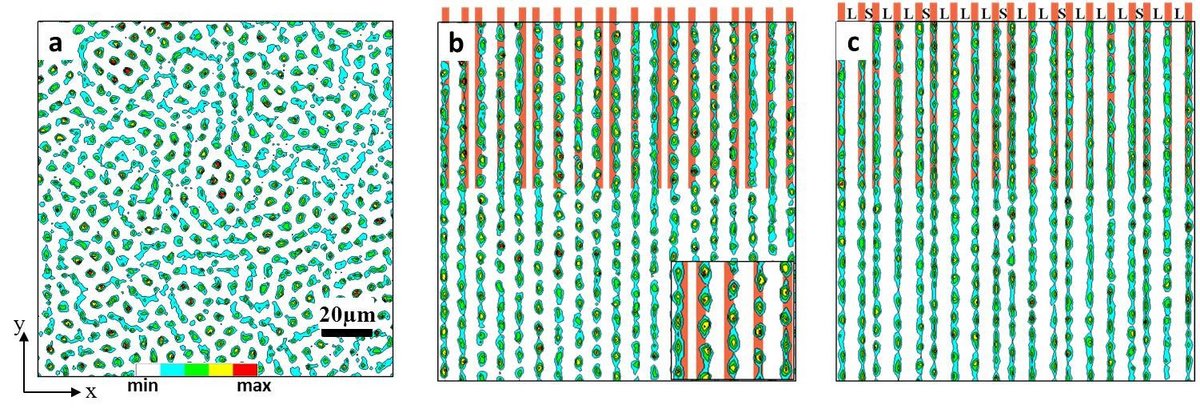
Periodic Average Structures
Although periodic crystals and quasicrystals both exhibit long-range positional order, their atomic configuration is markedly different. In contrast to periodic crystals, which are formed by the repetition of a unit cell, quasicrystals are created by the aperiodic arrangement of atoms. In view of these striking differences regarding their intrinsic order, the experimental observation of phase transitions between quasicrystals and crystals (or their corresponding approximants) upon variations in temperature or pressure, exposure to electron beams or small changes in the sample conditions, is surprising. In particular, it is not obvious what atomic movements are required to allow for such phase transitions.
We experimentally study the phase behavior of a charge-stabilized two-dimensional colloidal monolayer which is subjected to a one-dimensional quasiperiodic substrate potential. Upon increasing the laser intensity, we observe a transition from a periodic to a quasiperiodic state. It proceeds via the formation of an intermediate periodic average structure (PAS) which is related to the quasiperiodic lattice by a bounded 1-1 mapping. Because PAS can transform to crystals and quasicrystals by minute particle displacements, they provide a mechanism to allow for interesting insights into the relationship between periodic and quasiperiodic order.
| 132. Periodic average structures of colloidal quasicrystals |
| Lamiss Zaidouny, Thomas Bohlein, Johannes Roth, and Clemens Bechinger Soft Matter 10 (43), 8705-8710 (2014) |
